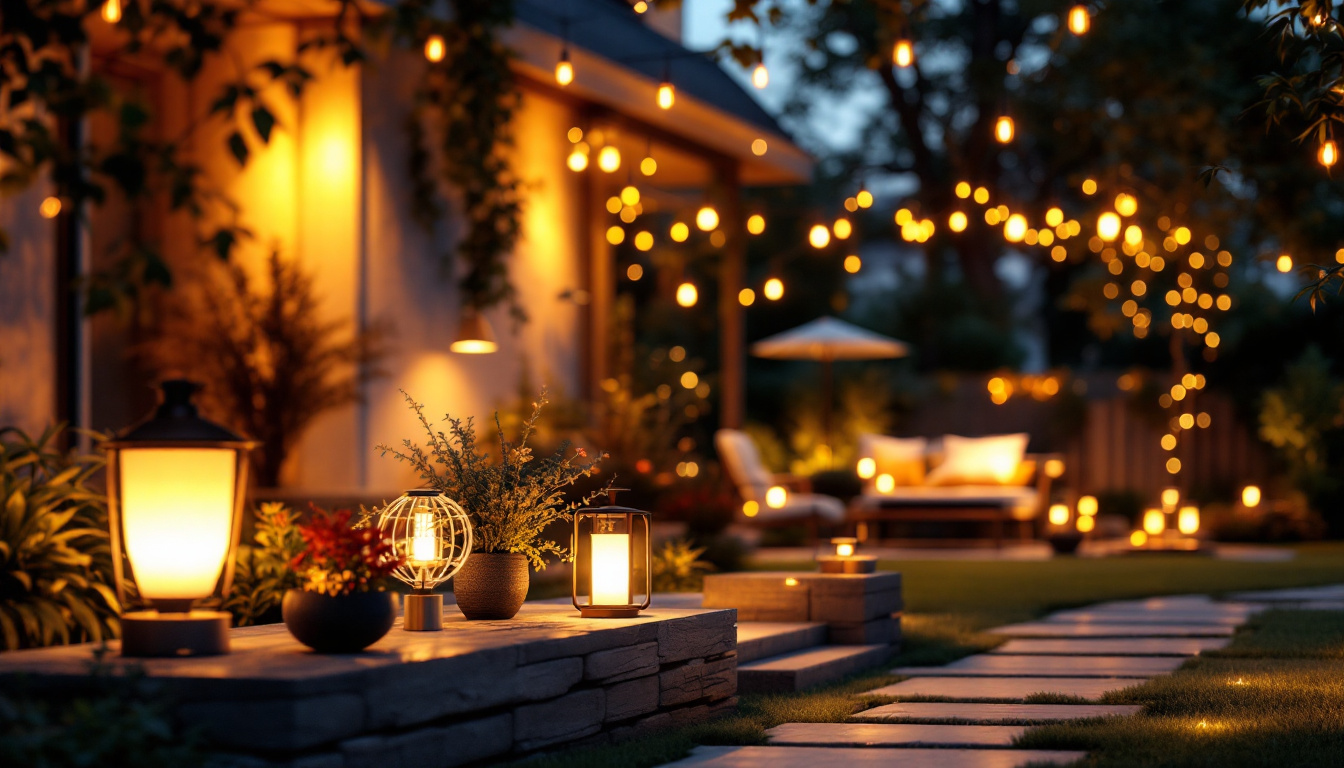
In the world of lighting, incandescent bulbs have long been a staple, cherished for their warm glow and simplicity. However, as technology evolves and more energy-efficient options emerge, lighting contractors often find themselves navigating a landscape filled with common pitfalls. This article aims to shed light on the frequent mistakes made when working with old style incandescent bulbs, providing insights to enhance both installation practices and client satisfaction.
Before diving into the common mistakes, it is essential to understand the characteristics of incandescent bulbs. These traditional light sources operate by passing an electric current through a filament, which then heats up and emits light. While they provide excellent color rendering and are available in various shapes and sizes, their energy inefficiency and shorter lifespan compared to modern alternatives can lead to challenges. The warm glow of incandescent bulbs creates a cozy atmosphere, making them a popular choice for homes and restaurants. However, as energy efficiency becomes increasingly important, many are reconsidering their use in favor of more sustainable options.
One of the most significant drawbacks of incandescent bulbs is their energy consumption. They convert only about 10% of the energy they use into visible light, with the rest dissipating as heat. This inefficiency can lead to higher energy bills for clients, which is a crucial consideration for contractors when recommending lighting solutions. In fact, switching to energy-efficient alternatives like LED or CFL bulbs can reduce energy consumption by up to 75%, making a substantial difference in long-term costs. Furthermore, as energy prices continue to rise, the financial implications of using incandescent bulbs become even more pronounced, prompting many homeowners to seek out more economical lighting options.
Heat generation is another factor that contractors must consider. Incandescent bulbs can become extremely hot during operation, posing a fire hazard if not installed correctly. Proper spacing and fixture selection are vital to mitigate this risk and ensure safety in residential and commercial settings. Additionally, the heat produced can affect the performance of other nearby electronic devices or sensitive materials, leading to potential damage over time. It’s also worth noting that the heat emitted by these bulbs can contribute to increased cooling costs in warmer months, as air conditioning systems work harder to offset the additional warmth generated. As such, understanding the thermal dynamics of incandescent lighting is essential for creating safe and energy-efficient environments.
Even experienced lighting contractors can make mistakes when installing incandescent bulbs. Understanding these common errors can help improve installation practices and enhance overall project outcomes.
One frequent mistake is the selection of fixtures that are not compatible with incandescent bulbs. While many fixtures are designed to accommodate various bulb types, some may not handle the heat generated by incandescent bulbs effectively. This can lead to premature fixture failure or, worse, fire hazards. It is crucial to ensure that the chosen fixture is rated for the wattage and heat output of the installed bulbs. Additionally, the aesthetic design of the fixture should complement the space while providing adequate illumination; a mismatch can detract from the overall ambiance of a room. For instance, a sleek modern fixture may not be the best choice for a vintage-style home, where traditional fixtures would enhance the character of the space.
Another common oversight involves dimming capabilities. Not all incandescent bulbs are compatible with dimmer switches, and using the wrong combination can result in flickering or buzzing. Contractors should always verify that the bulbs being installed are compatible with the dimming systems in place. Educating clients about the benefits of using dimmable incandescent bulbs can also enhance their overall lighting experience. Furthermore, it’s worth noting that the choice of dimmer switch can significantly impact performance; selecting a high-quality dimmer that is specifically designed for incandescent use can help achieve smoother transitions and extend the lifespan of both the bulbs and the dimmer itself. By providing clients with options and insights into the latest dimming technologies, contractors can elevate their service and ensure satisfaction with the lighting solutions provided.
When it comes to incandescent bulbs, miscalculating lumens and wattage can lead to inadequate lighting solutions. Contractors must have a solid understanding of how to balance brightness and energy consumption to meet client needs effectively. This balance is not just about aesthetics; it also affects functionality and energy efficiency, which are increasingly important in today’s eco-conscious market.
Lumens measure the total amount of visible light emitted by a source. Many contractors mistakenly focus solely on wattage, which is not a direct indicator of brightness. For instance, a 60-watt incandescent bulb typically produces around 800 lumens. However, with the rise of energy-efficient options, understanding lumens has become increasingly important. Contractors should guide clients in choosing bulbs that provide the desired brightness without unnecessarily high wattage. Additionally, it’s important to consider the color temperature of the light, measured in Kelvins, as this can significantly influence the ambiance of a space. For example, warmer light (around 2700K) is often preferred for living areas, while cooler light (5000K and above) is more suitable for workspaces where clarity and focus are essential.
Choosing the correct wattage is crucial for both safety and performance. Exceeding the recommended wattage for a fixture can lead to overheating and potential fire hazards. On the other hand, using bulbs with insufficient wattage can result in dimly lit spaces that fail to meet clients’ expectations. A careful assessment of the space and its lighting needs is essential to ensure the right balance is achieved. Furthermore, contractors should also consider the type of fixtures being used; for example, recessed lighting may require different wattage considerations compared to traditional lamps. The placement of fixtures can also impact how light is distributed throughout a room, making it vital to plan the layout thoughtfully to avoid dark corners or overly bright spots. Engaging clients in this process not only helps in achieving optimal lighting but also educates them on the importance of energy efficiency and long-term savings associated with proper lighting choices.
Client satisfaction is paramount in any lighting project. Ignoring client preferences can lead to dissatisfaction and the need for costly adjustments later on. Understanding clients’ needs and preferences is essential for successful installations. Each project is unique, and the client’s vision plays a crucial role in shaping the final design. When preferences are overlooked, it can result in a mismatch between the intended atmosphere and the actual outcome, ultimately diminishing the overall aesthetic and functionality of the space.
Effective communication is key. Lighting contractors should engage in thorough consultations with clients to understand their specific needs, preferences, and any concerns they may have. This includes discussing the desired ambiance, color temperature, and functionality of the lighting. By actively involving clients in the decision-making process, contractors can ensure that the final outcome aligns with their vision. Furthermore, establishing a rapport with clients can foster trust and open the door for ongoing dialogue, making it easier to address any adjustments or modifications that may arise during the project. Regular check-ins and updates throughout the installation process can also help to reinforce this relationship, ensuring that clients feel valued and heard.
Many clients may not be aware of the various options available when it comes to incandescent bulbs. Educating them about different bulb types, such as frosted or clear, and their respective applications can help clients make informed decisions. Additionally, discussing the benefits of energy-efficient alternatives can provide clients with a broader perspective on their lighting choices. For instance, introducing clients to LED technology not only highlights its longevity and cost-effectiveness but also its versatility in creating dynamic lighting schemes. By showcasing various styles, such as pendant lights, recessed lighting, or wall sconces, contractors can inspire clients to explore innovative designs that enhance their space while meeting their functional needs. This educational approach empowers clients, allowing them to feel more confident in their selections and ultimately leading to a more satisfying outcome for everyone involved.
Maintenance is another area where contractors often fall short. While incandescent bulbs are relatively simple to replace, neglecting maintenance considerations can lead to increased costs and inconveniences for clients.
Incandescent bulbs have a shorter lifespan compared to their LED counterparts. Contractors should inform clients about the expected lifespan of the bulbs being installed and the importance of keeping spare bulbs on hand. This proactive approach can help minimize disruptions caused by burned-out bulbs and ensure that clients are prepared for timely replacements.
Proper care and cleaning of fixtures and bulbs can significantly impact the performance and longevity of incandescent lighting. Contractors should advise clients on how to clean their fixtures safely and effectively, as dust and grime can diminish light output. Regular maintenance not only enhances the aesthetic appeal of the lighting but also contributes to the overall efficiency of the system.
As awareness of environmental issues grows, lighting contractors must consider the ecological impact of their choices. While incandescent bulbs have been popular for decades, their environmental footprint is becoming increasingly scrutinized.
Despite their warm glow, incandescent bulbs are less energy-efficient than modern alternatives like LEDs. Contractors should be prepared to discuss the environmental impact of their lighting choices with clients. Offering energy-efficient options can not only reduce clients’ energy bills but also contribute to a more sustainable future.
Proper disposal of incandescent bulbs is another important consideration. While they do not contain hazardous materials like compact fluorescent lamps (CFLs), contractors should still educate clients about responsible disposal practices. Encouraging recycling can help reduce waste and promote environmentally friendly practices within the community.
In conclusion, while old style incandescent bulbs have their charm, lighting contractors must navigate a variety of challenges when working with them. By understanding the common mistakes outlined in this article, contractors can enhance their installation practices, improve client satisfaction, and contribute to a more sustainable lighting landscape. Through effective communication, education, and attention to detail, contractors can ensure that their projects shine brightly and meet the diverse needs of their clients.
Ready to elevate your lighting installations and avoid the common pitfalls with incandescent bulbs? At LumenWholesale, we provide lighting contractors with the highest quality, spec-grade lighting products at prices that can’t be beaten. Say goodbye to local distributor markups and hello to a vast selection of reliable, high-performance lighting that meets the most rigorous industry standards. With free shipping on bulk orders, LumenWholesale is your go-to source for premium lighting solutions that combine quality, affordability, and convenience. Don’t compromise on your lighting projects—choose Wholesale Lighting at the Best Value with LumenWholesale.

Discover how sodium light ballasts can revolutionize your lighting projects.

Discover essential insights into outdoor lighting stores that every lighting contractor should know.

Discover why the 3 plug wall outlet is a game-changer for lighting contractors.

Discover essential insights into Garahe Light, the innovative solution transforming the lighting industry.